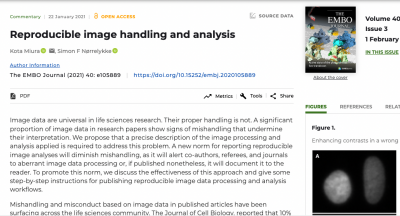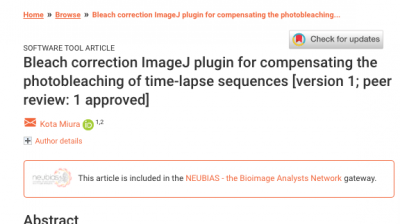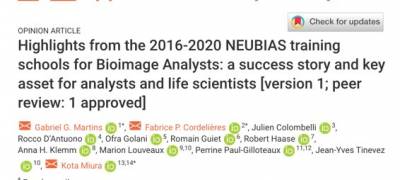Weblog
GloBIAS Launched!
Global Bioimage Analysts' Society (GloBIAS) officially launched on October 24th, 2024, aiming to promote a sustainable worldwide community of bioimage analysts. We registered the society in Austria. We compared the simplicity of the registration of a society in various countries, and the final choice was Austria. It was also that Gabriel Krens, the head of the imaging facility at the Institute of Science and Technology Austria (ISTA), kindly agreed to host the location of GloBIAS in his institute. We thank Gabriel tremendously for this generous support.
GloBIAS aims to support bioimage analysis experts, including analysts, software developers, and users of bioimage analysis. When we say “bioimage analysis”, it means “quantitative measurement of the parameters of biological systems using image data”. Nowadays, image data is more complex than what we generally perceive as “images” in our daily life. It is a form of data that captures the multidimensional state of biological systems. This means that the analysis of such data is beyond “image analysis” in the traditional sense - it is more about how we untangle that multidimensionality and come to some simpler view, looking at and understanding how biological systems are in operation. The future of this community is filled with many findings we have yet to know, and with excitement to explore the jungle of biological systems.
Bioimage Data Analysis Workflows ‒ Advanced Components and Methods
Since 2022, the third book from the NEUBIAS network has been available, with open access to all chapters. Enjoy!
Contents:
- Introduction (Nataša Sladoje and Kota Miura)
- Batch Processing Methods in ImageJ (Anna Klemm and Kota Miura)
- Python: Data Handling, Analysis and Plotting (Arianne Bercowsky Rama)
- Building a Bioimage Analysis Workflow Using Deep Learning (Estibaliz Gómez-de-Mariscal, Daniel Franco- Barranco, Arrate Muñoz-Barrutia and Ignacio Arganda-Carreras)
- GPU-Accelerating ImageJ Macro Image Processing Workflows Using CLIJ (Daniela Vorkel and Robert Haase)
- How to Do the Deconstruction of Bioimage Analysis Workflows: A Case Study with SurfCut. (Marion Louveaux and Stéphane Verger)
- i.2.i. with the (Fruit) Fly: Quantifying Position Effect Variegation in Drosophila Melanogaster (Bertrand Cinquin, Joyce Y. Kao and Mark L. Siegal)
- A MATLAB Pipeline for Spatiotemporal Quantification of Monolayer Cell Migration (Yishaia Zabary and Assaf Zaritsky)
Reproducible image handling and analysis
 We often hear retraction of papers with fake image data like gel images with hand-drawn bands and cleanups, but in addition to such elementary-level mistakes, there are image analyses used in papers that are scientifically questionable. With Simon, we tried to shed light on this overlooked problem and propose a solution.
We often hear retraction of papers with fake image data like gel images with hand-drawn bands and cleanups, but in addition to such elementary-level mistakes, there are image analyses used in papers that are scientifically questionable. With Simon, we tried to shed light on this overlooked problem and propose a solution.
NEUBIAS Training School Paper
Details of motivations, the design, and paedagogic concepts of NEUBIAS Bioimage Analysis schools, started in 2017, are now in a manuscript. I wrote the “Bioimage Analyst School” part, and am quite satisfied to have the written record of our struggle and achievements, that I did together with the bioimage analysis genius Jean-Yves Tinevez (The Pasteur Institute, Paris).
Bleach Correction Plugin Paper
 The paper describing the Bleach Correction Plugin (for ImageJ) is now published.
The paper describing the Bleach Correction Plugin (for ImageJ) is now published.
https://f1000research.com/articles/9-1494
Please cite this paper if you are using this plugin!



